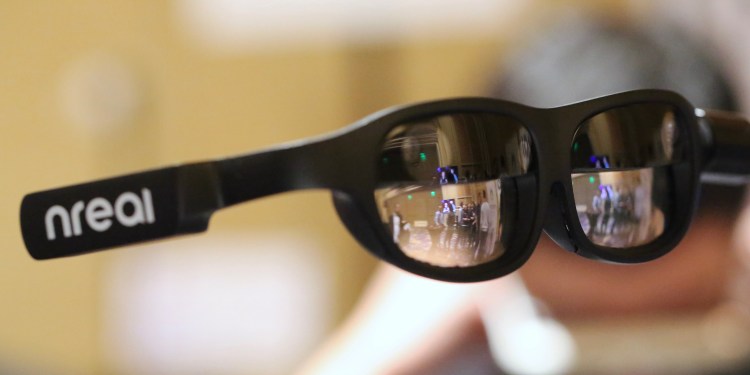Ahead of 2019’s Consumer Electronics Show, I hoped to see several key developments with next-generation VR and AR headsets — dramatically higher-resolution PC VR headsets, compelling standalone VR headsets, and and less conspicuous AR headsets with wider fields of view. I won’t tell you that these predictions turned out to be fully correct, but they weren’t completely wrong, either.
Although industry heavyweight Oculus took a back seat at CES, its chief rival HTC stepped up to the plate with two major hardware announcements: the high-end Vive Pro Eye, and mysterious Vive Cosmos, promising the company’s highest resolution screens yet. Oculus press released a relatively quiet price drop on the Rift, and offered private suite Quest demos that affirmed its upcoming standalone headset is the one to watch in 2019. And many small companies showed up with new VR and AR headsets, including models that are much lighter and wider-angled than their predecessors.
The real question is whether anyone’s going to be willing to pay for the innovations that were on display. Most of the new AR headsets are targeting $1000 price tags, still above what consumers will pay for the technology. The new Vive Pro Eye is likely to be in a similar price range, sitting above even the original Vive Pro rather than replacing it. And with Facebook’s recent privacy scandals, it’s unclear whether the masses will be willing to trust its Oculus unit with their location and VR viewing data.
Here are some of the most interesting things I saw at CES in VR and AR.
Vive Pro Eye, Tobii Eye Tracking, Vive Cosmos, and Vive Focus
I’ve already covered the Pro Eye and Cosmos announcement, but I had a lot of hands-on time with the former and an extra chance to inspect the latter since writing that story. My impressions are generally positive, though caveated by one consistent issue: I’ve never seen as many tech demo crashes for a single product as I did for Vive Pro Eye. It seemed like half of the demos required rebooting and/or engineer support to get features working as they were supposed to, a problem that might be laid squarely at HTC’s feet if it wasn’t also happening with VR demos at other companies’ booths as well.
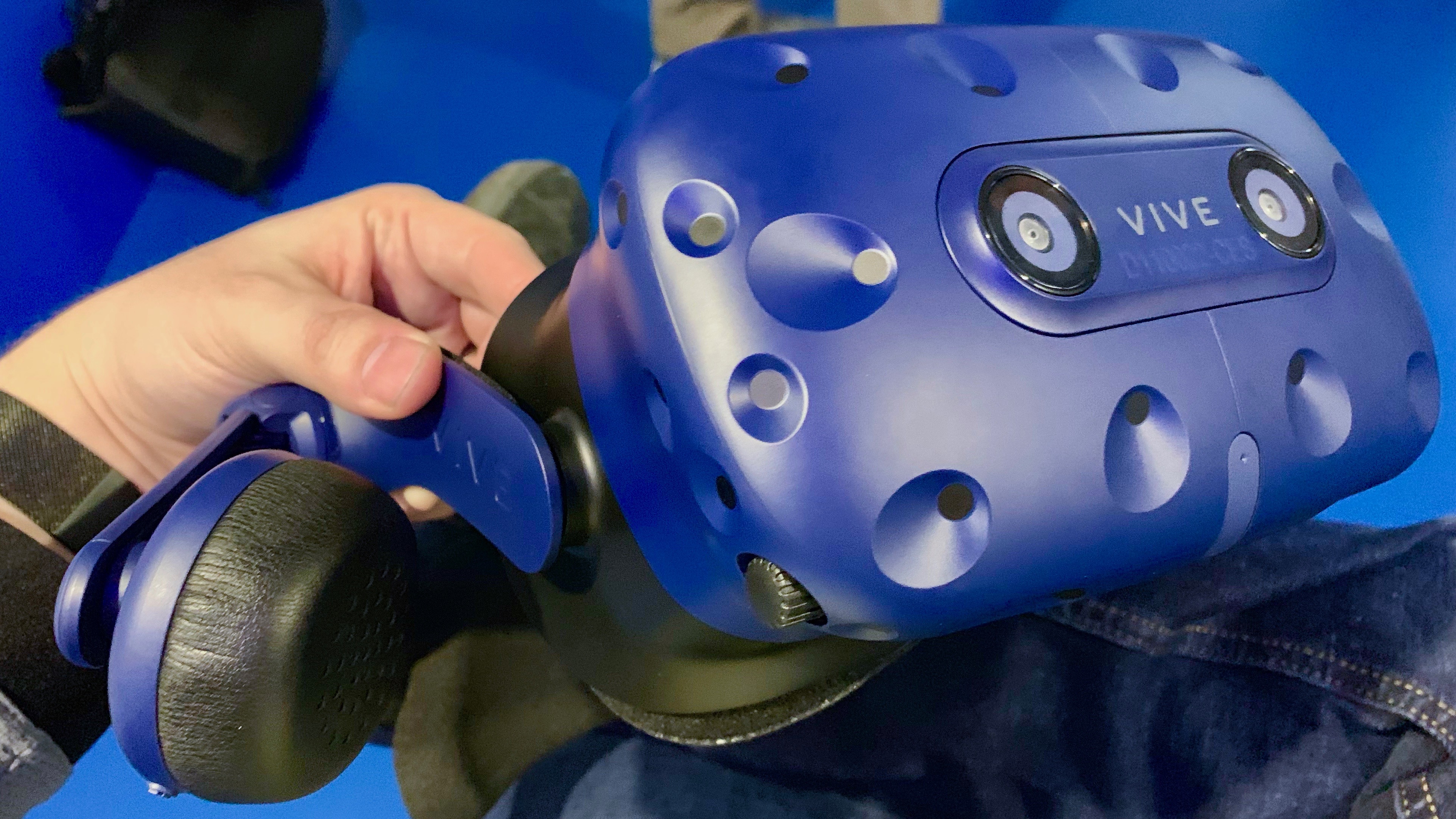
When eye tracking worked properly, as it did at the booth of Tobii, HTC’s Vive Pro Eye technology partner for the feature, it was impressive. The company had a series of its own demos that clearly showed how one area of the screen could be rendered at full fidelity while another area — the part your pupils aren’t focused on — could be rendered at 25 percent fidelity to save GPU processing power. Regardless of whether they were running on Vive Pro Eye or a Qualcomm standalone VR reference design, Tobii’s demos worked properly.
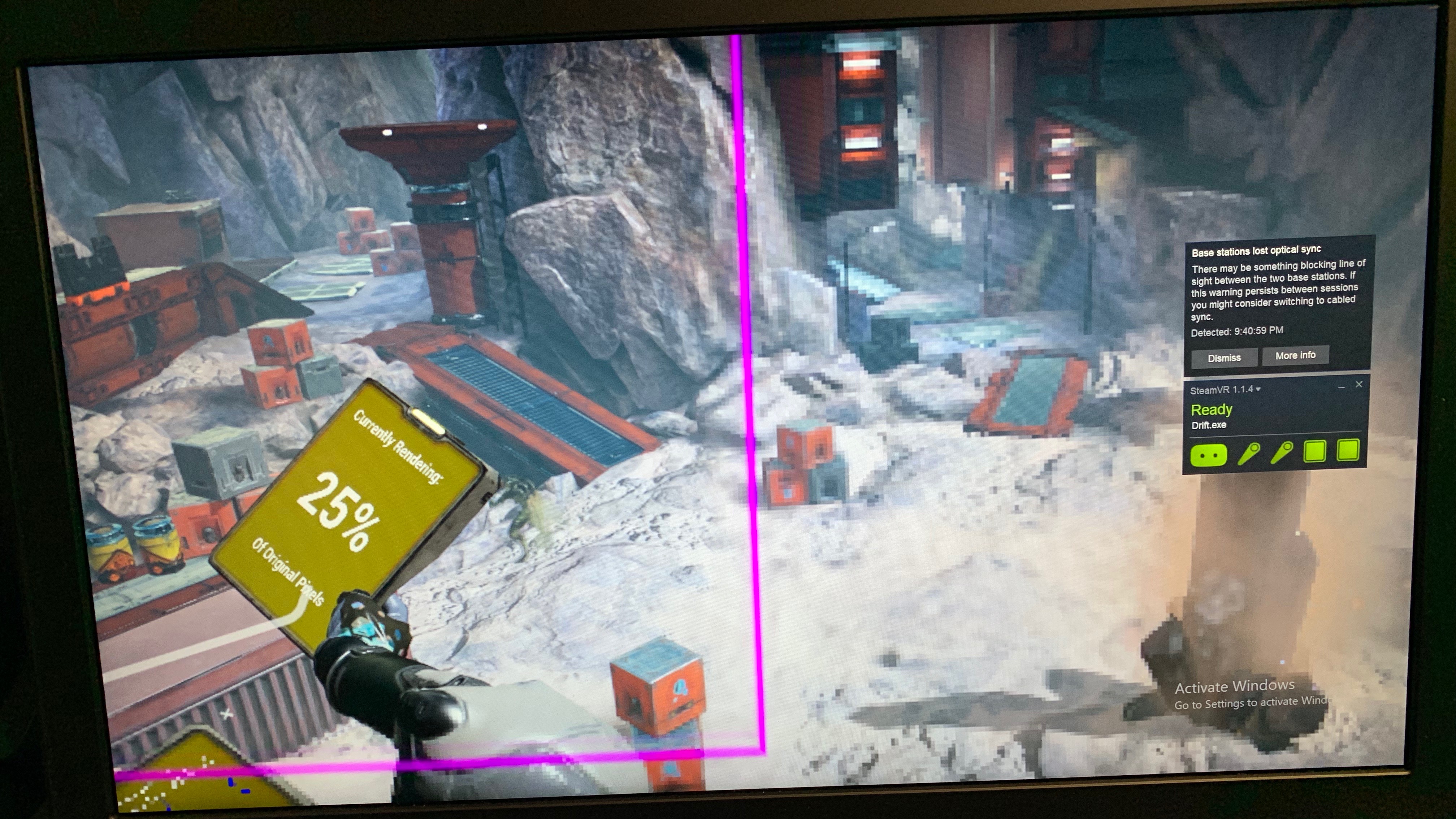
HTC confused the hell out of its audience of journalists with the announcement of Vive Cosmos, an upcoming headset that initially appeared to be a standalone device but turned out to be tethered — but to what, the company isn’t saying. The sleeker design apparently will work with PCs as well as other unspecified devices, featuring both plenty of external camera hardware and substantially redesigned controllers.
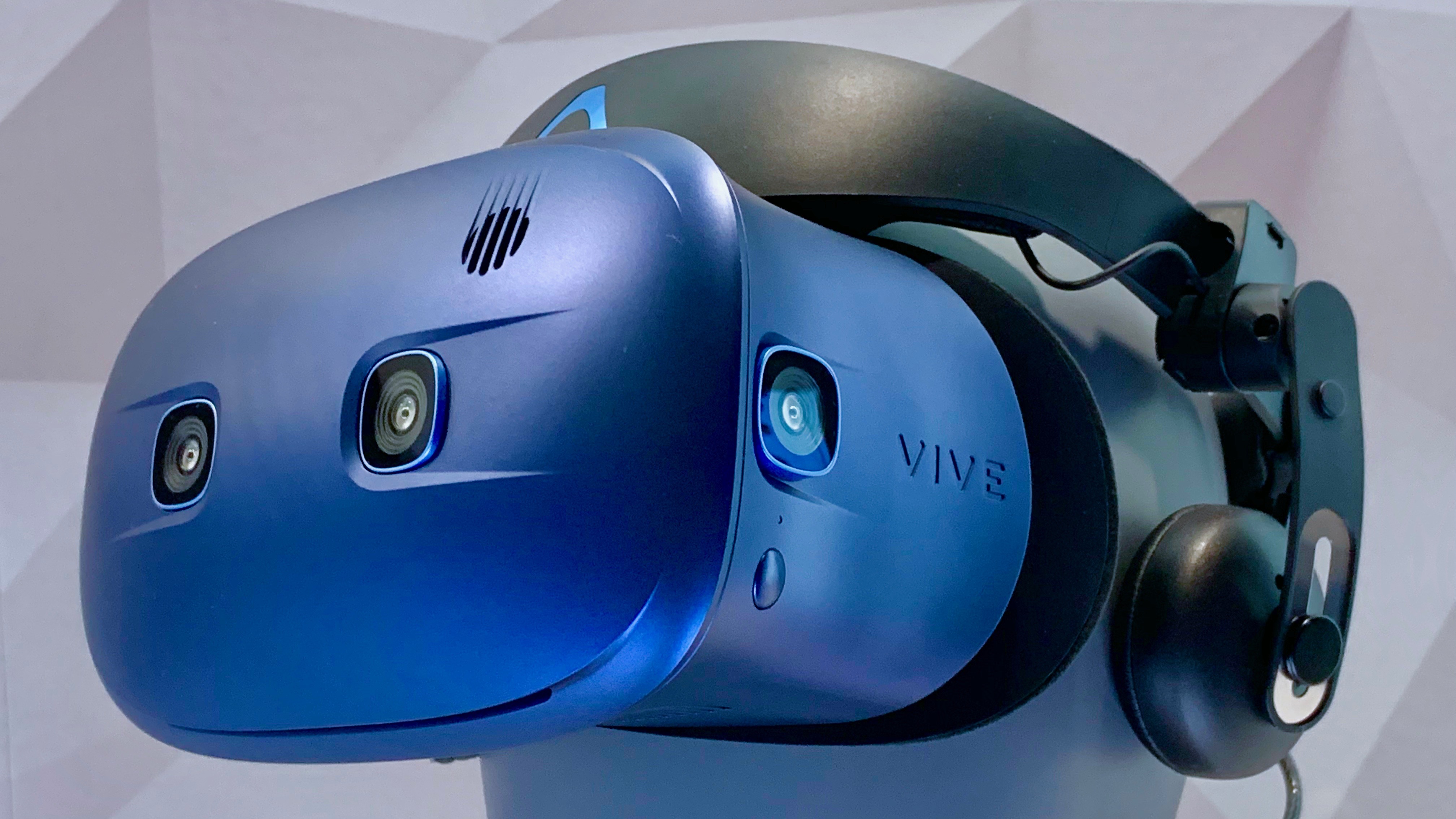
The controllers were giving off a bright white glow straight out of Tron when they were unveiled at the press event. At a later session with HTC, they were powered down so their internal details were more visible.
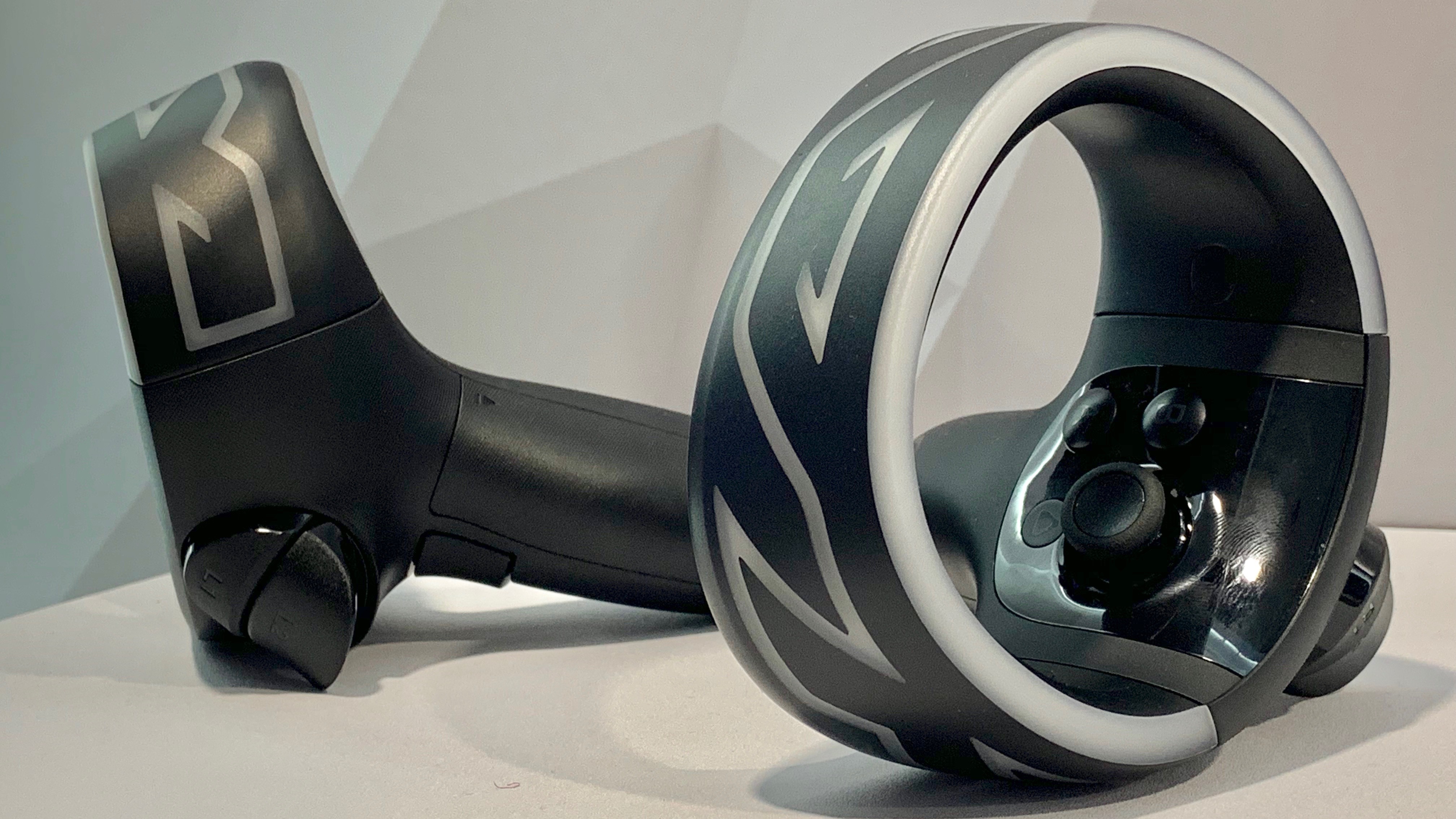
I’m excited to see what HTC does with its lineup, but it’s simultaneously becoming too crowded and unaffordable for average consumers. Adding Cosmos to the existing family means that there will be five different Vive models at once: Vive, Vive Focus, Vive Pro, Vive Pro Eye, and Vive Cosmos. At least three of them are now being sold almost exclusively to enterprise customers, with Cosmos a question mark, and the base Vive isn’t getting major hardware upgrades. The standalone Focus is now apparently going to be an enterprise-only solution in the United States, leaving Oculus to basically own the standalone market with Go and Quest. I’m hoping HTC finds a way to meaningfully compete in 2019.
Realmax and Nreal
The image at the top of this article is a look at new AR glasses from Nreal, one of the only AR products that excited me at CES — my colleague Dean Takahashi covered them before I sat down at the keyboard. They are exactly what they appear to be: three-ounce AR glasses that could pass for a just slightly wonky pair of sunglasses while featuring head tracking, a very bright and respectably wide waveguide screen, and a wireless controller.
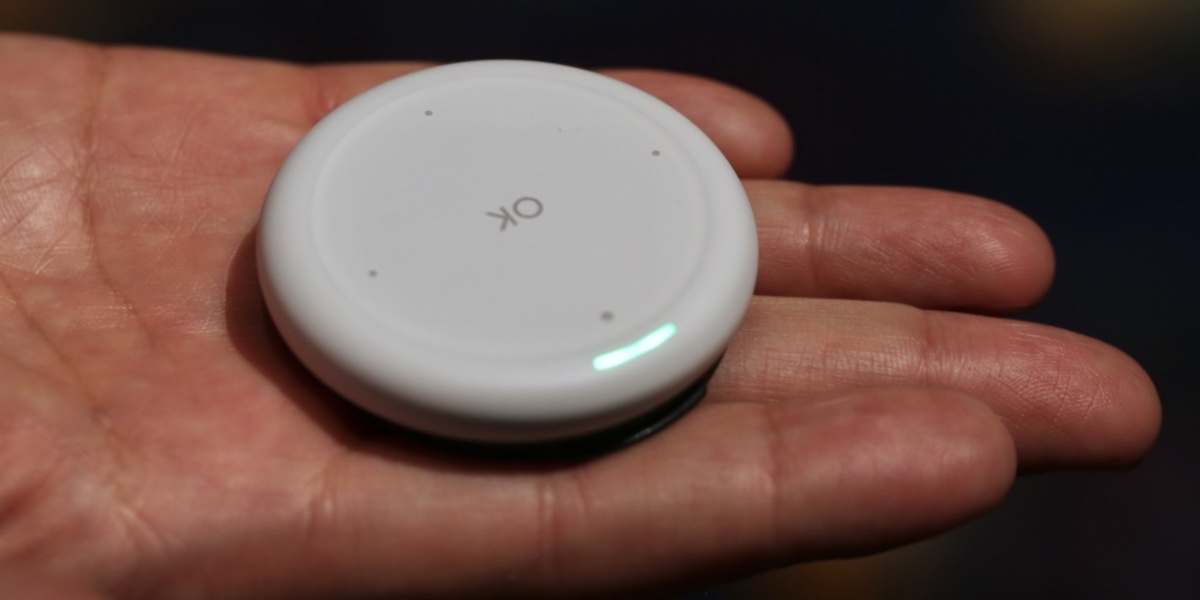
The Nreal controller is simple, possibly too much so. It looks like a small puck that can be touched and tapped for navigation, and itself is wirelessly tracked with three degrees of freedom. Unlike the glasses, which looked quite good, I didn’t get a chance to actually use the controller. Nor did I get to wear the separate computing unit required to provide Nreal with content. I just saw a demo where I walked around a convincing but cartoony 3D avatar generated by a Qualcomm Snapdragon 835 chipset.

Compared with Nreal, Realmax’s Qian doesn’t force you to keep a separate computer elsewhere on your person — like some other standalone mixed reality devices, you wear it directly within the headset. The company isn’t shy about saying that it’s effectively placing a Qualcomm Snapdragon smartphone on your face, minus the cellular connectivity, but it’s neither offensively heavy nor otherwise terrible to wear. You won’t be walking any fashion runways with this headset, but it’s interesting.
While Nreal’s design gives you a 52-degree augmented field of view, Realmax delivers a 100-degree field of view, which feels closer to a VR than AR headset. That extra screen width and bright, clear colors make it feel complately natural to look at a simulated TV or do a walkaround of a wide virtual object such as a car. The difference between Qian and earlier AR headsets such as Microsoft’s HoloLens or Magic Leap One is night-and-day level; it mightn’t look as fancy, but it delivers the goods in real-world use.
Location-based VR and miscellany
Thanks to some dodgy in-flight Wi-Fi, my deeper thoughts on other elements of the VR and AR exhibits at CES were lost to the wind. So I’ll just offer a handful of quick comments on the following images.
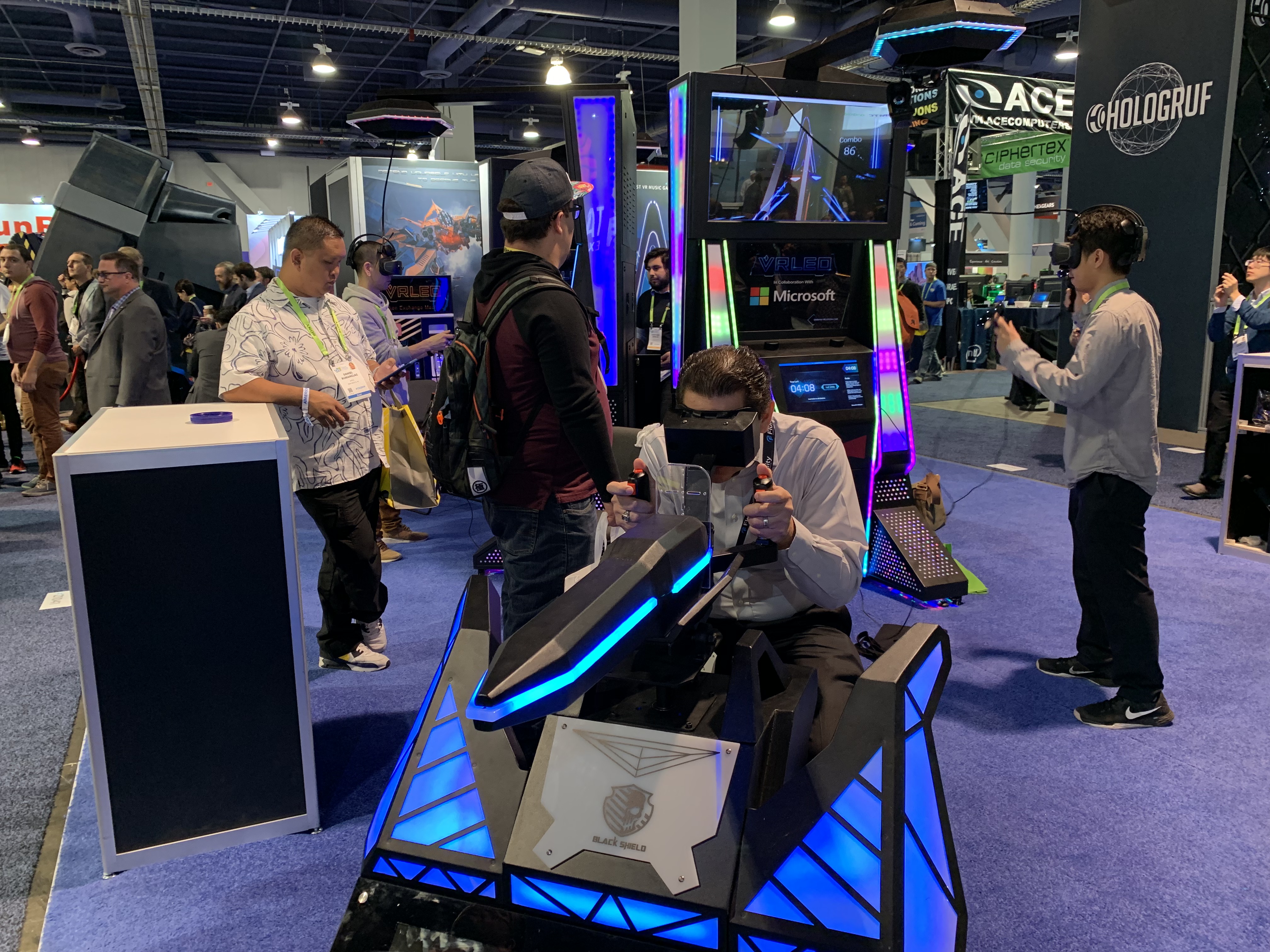
Talented companies are making compelling alternative VR controllers. They all seem destined for location-based entertainment centers, as average consumers can’t afford to buy them.
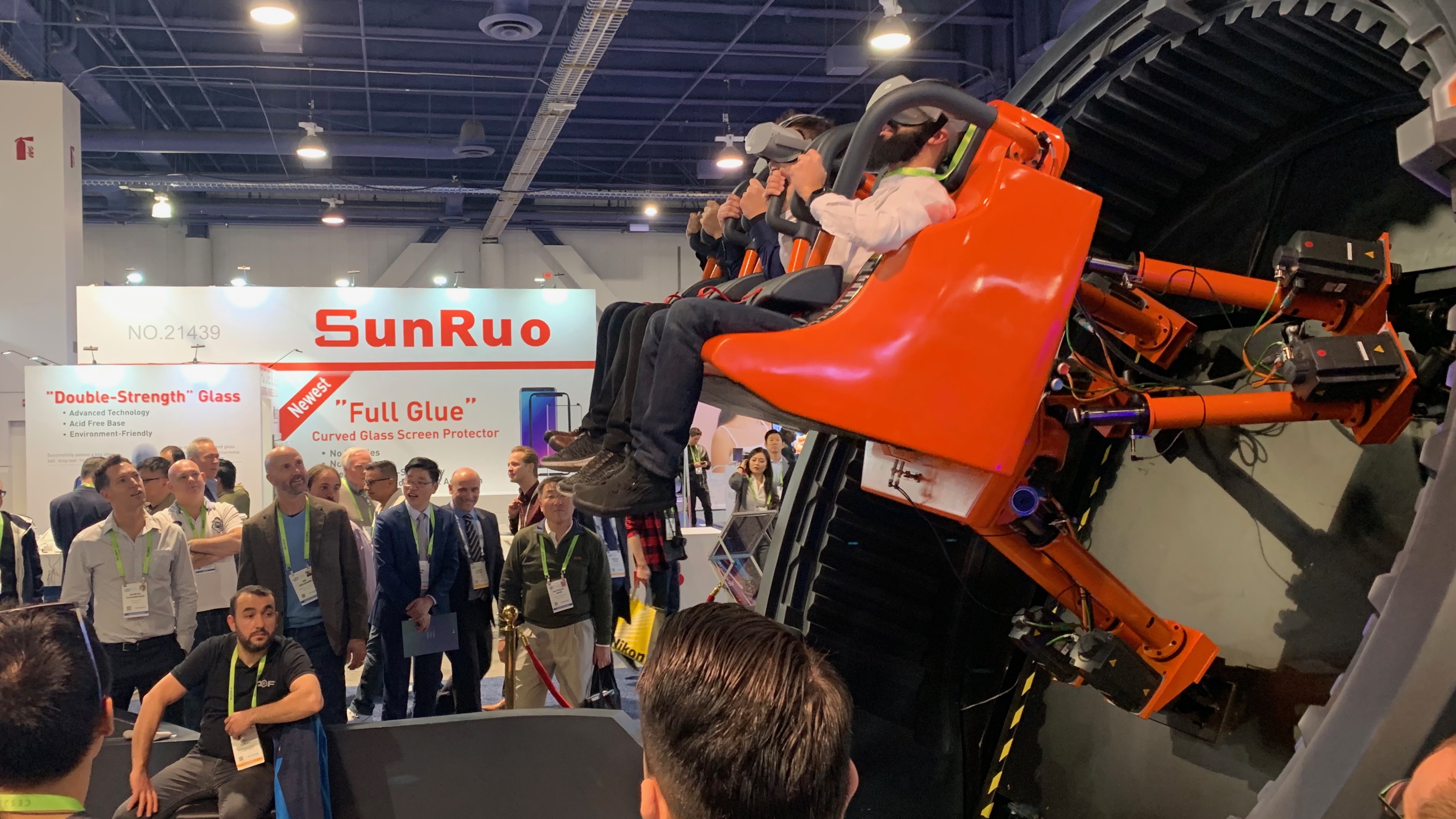
Hydraulic VR rides? Sign me up. Again, no consumer can afford them, but perhaps we’ll see them in theme parks or county fairs.
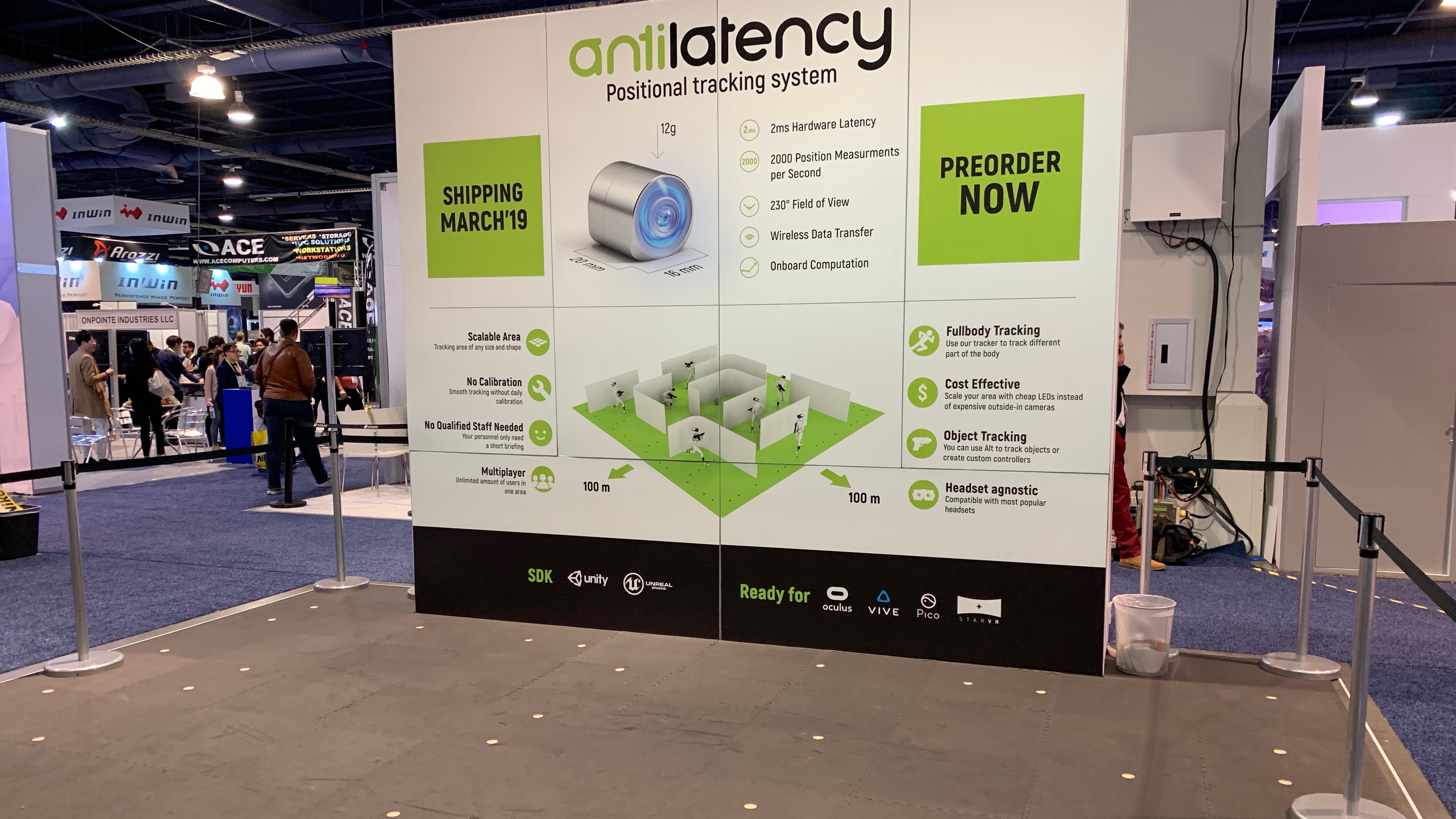
Small accessories are going to change the LBE VR story. Little IR emitters from Antilatency will make it easier for companies to offer room- and warehouse-scale VR at affordable prices for customers.

Pico’s G2 4K VR headset is now being marketed strictly to enterprise customers, but was designed with the opposite approach from HTC’s Vive Pro Eye. Instead of upgrading the Snapdragon 835 to a faster processor, it kept that hardware the same while boosting screen resolution to 4K — because, Pico says, enterprise customers don’t care about the extra power. Developers I met at CES disagree, but there’s room for multiple options in the marketplace.
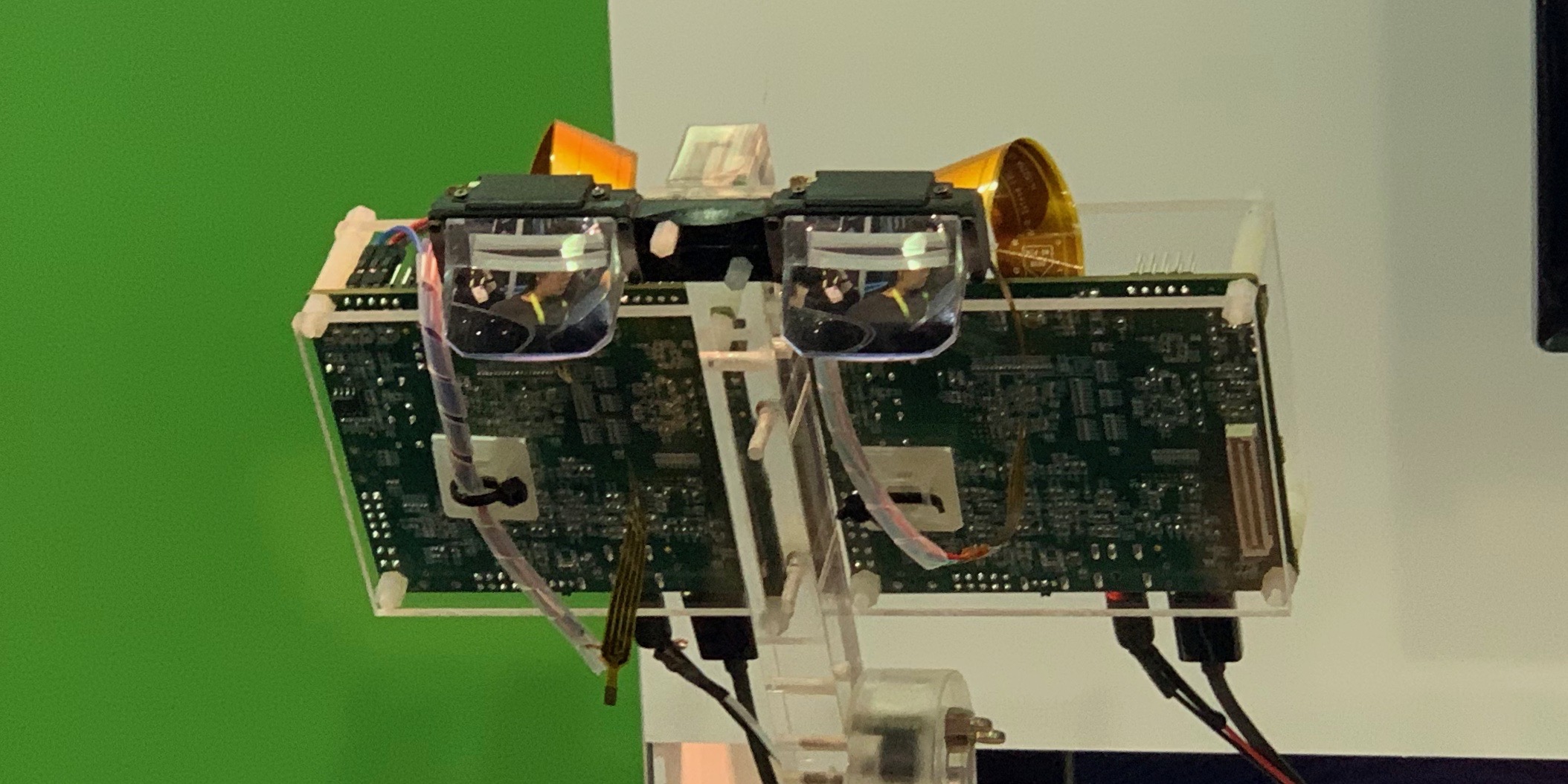
One of many prototype next-gen AR screens at the show — this one, 4K.
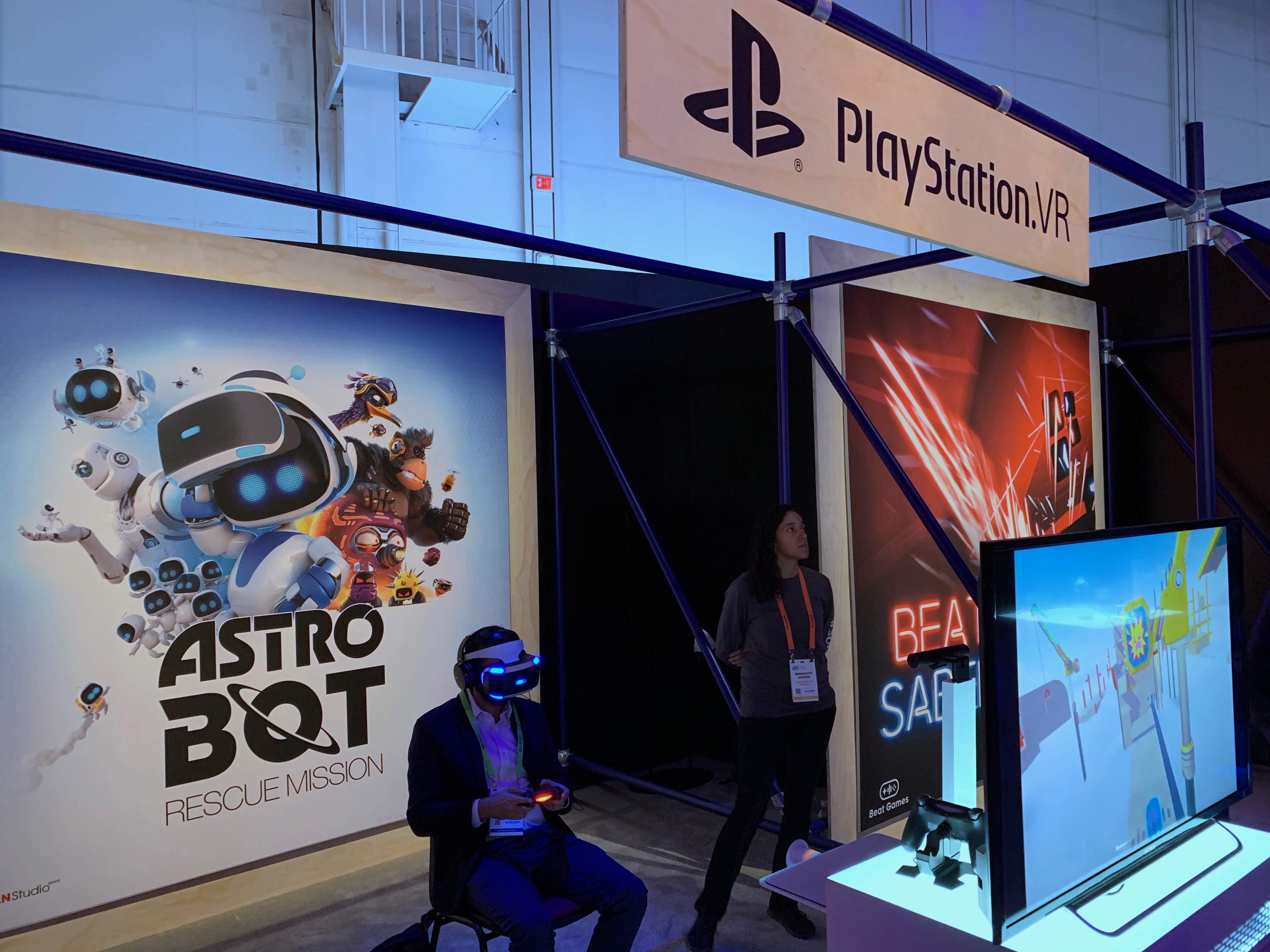
Sony had nothing new to show at CES. Since it’s not exhibiting at E3 this year, who knows whether it will have anything major to announce for the increasingly popular PSVR platform for months to come?
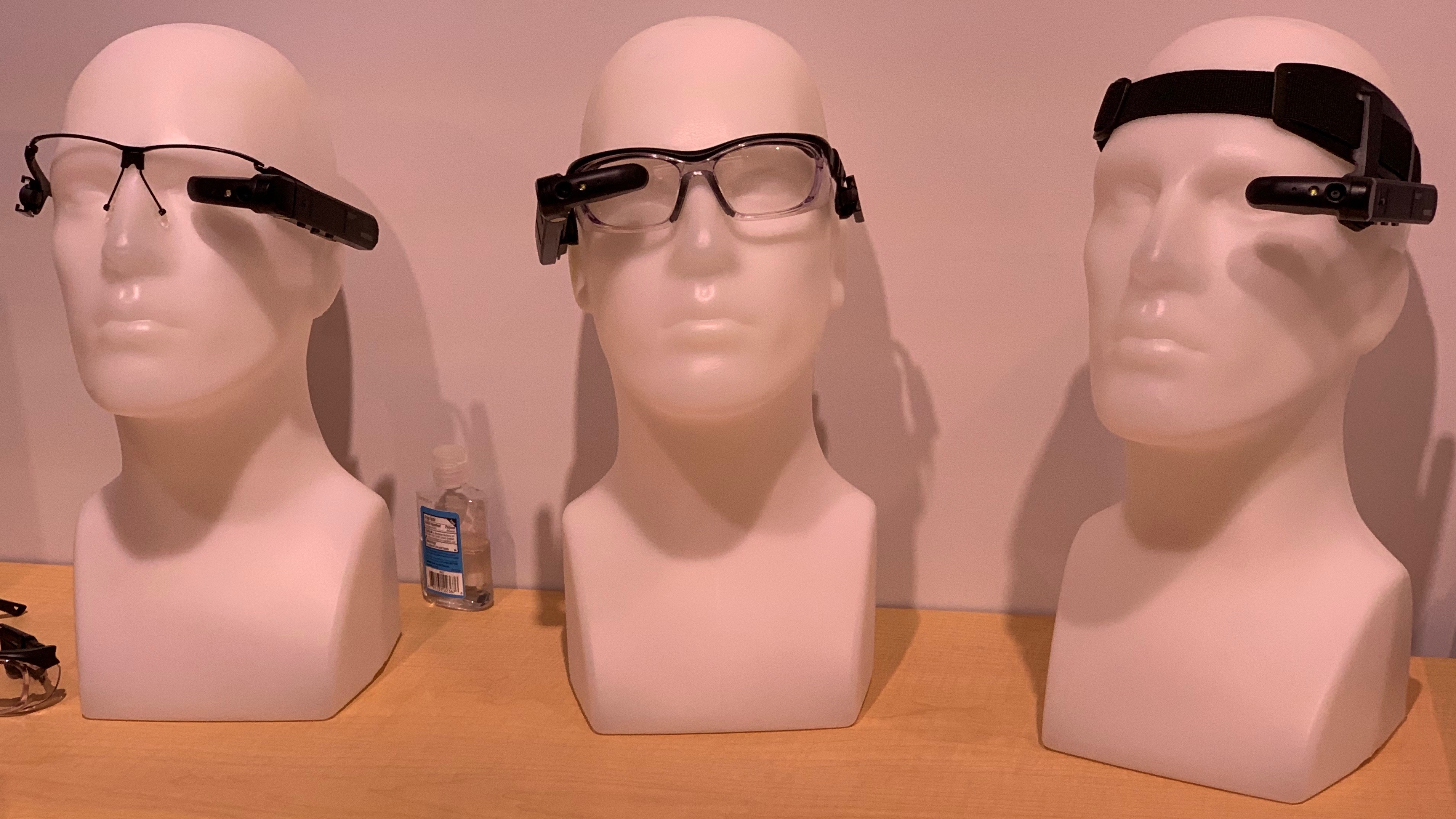
It’s great to think that AR headsets like the ones above are about to become a distant memory. Seeing these Sharp glasses on display was actually head-turning because they’re so primitive in design compared with the latest AR devices from other companies.
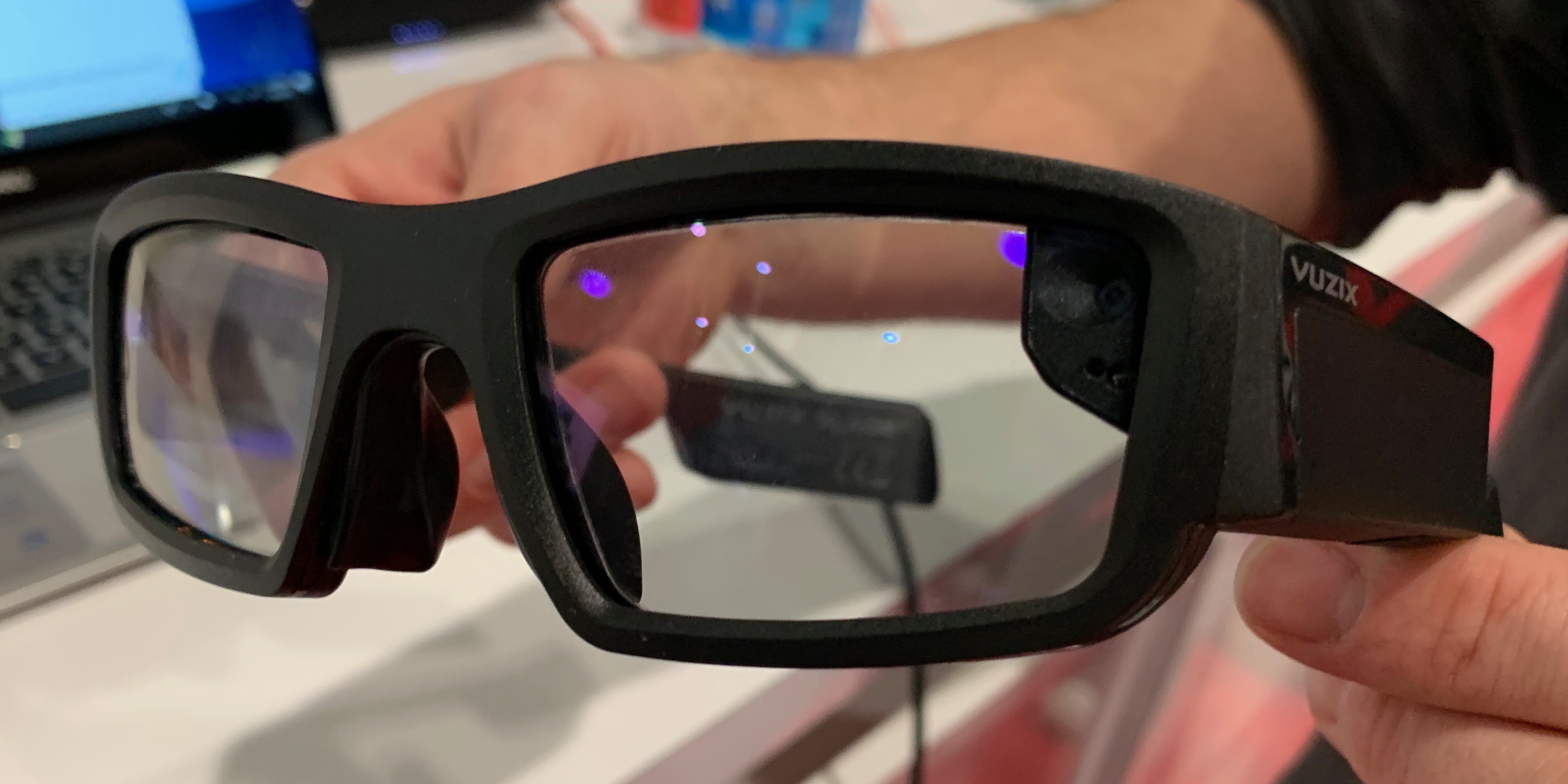
Vuzix Blade is just one of several “normal-looking” glasses at CES that include basic AR functionality. You get the same camera, screen, microphone, and touch pad features of the Borg-like AR headsets, all nestled within a pair of fairly regular looking glasses. We’ve covered Blade in several articles already; the screen isn’t as impressive as in the Nreal or Realmax options, but it’s a step beyond Microsoft’s HoloLens, and less expensive to boot.
This is going to be an exciting year for VR and AR. The headsets we’ve been waiting for are coming — likely within the next 2-3 years — so hopefully they’ll be affordable, because these mixed reality technologies have a lot of potential to change the way we work and play.
